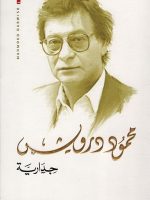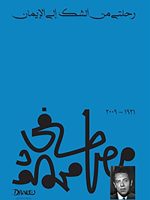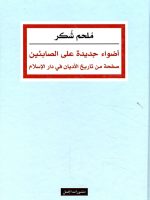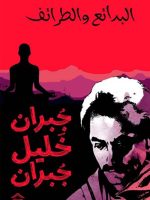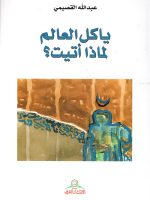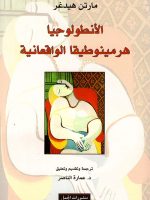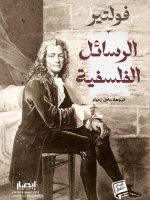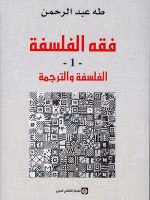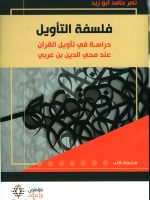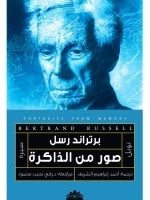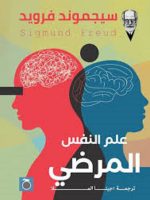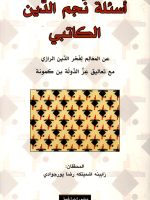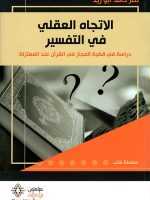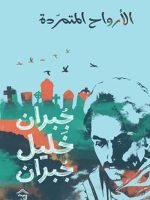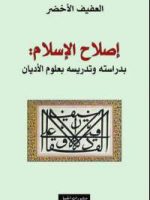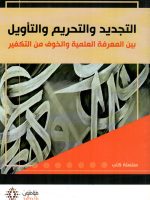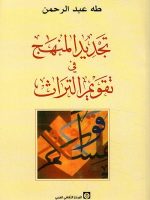-
Mural
د.ا4.26It is a long poem by Mahmoud Darwish that expresses the poet’s struggle with death, and addresses the topics of existence, memory, and dreams, within a political and existential context that reflects the issues of the homeland and the Palestinian people.
د.ا4.97 -
My journey from doubt to faith
د.ا2.13I refused to worship God because I was immersed in worshipping myself and admired the flash of light that began to flash in my mind with the opening of consciousness and the beginning of the awakening from the cradle of childhood.
This psychological state was behind the controversial scene that recurs every day. I also missed the origins of logic and I am dealing with logic and I did not realize that I am contradicting myself as I recognize the Creator and then say who created the Creator and make him a creature at the time when I call him a creator, which is sophistry itself.
Moreover, to say a first cause of existence requires that this cause must exist in itself and not dependent or need others to exist. If a cause needs a cause, this makes it one of the causal links and does not make it a first cause.د.ا3.55 -
New Lights on the Sabians A Page from the History of Religions in the House of Islam
د.ا14.20A book that reviews the history of the Sabians and their impact on the Islamic world, revealing new aspects of their understanding and cultural and religious influence.
د.ا15.62 -
Nietzsche’s Fifth Gospel
د.ا3.55A philosophical exploration of faith in the face of love and loss.
د.ا4.97 -
Novelties and curiosities
د.ا2.13Gibran’s literary style was characterized by smooth words, simplicity of expression, the use of all linguistic formulas and styles, and the frequent use of metaphors and figures of speech. Perhaps the most important feature of Gibran’s literary works is creativity in the art of photography. We find many beautiful, imaginative artistic images full of deep meanings and expressions covering his literary works; because he was an artist and painter who initially depicted the idea and then created it. Gibran relied on two styles in his literary works: the first is characterized by strength and revolution against beliefs and customs and the call for freedom, and the second is characterized by the love of enjoying life and the call to follow inclinations
د.ا3.55 -
O all the world, why have you come?
د.ا12.78The book is a philosophical meditation on human existence and its questions about life and meaning
د.ا15.62 -
On Wine and Hashish
د.ا4.00This book explores the effects and cultural significance of wine and hashish, blending personal reflection with historical and philosophical insights.
د.ا6.00 -
Ontology Hermeneutics of Realism
د.ا4.97A book that presents a philosophical analysis of ontology, focusing on interpreting reality through interpretation and understanding the relationship between thought and reality.
د.ا6.39 -
Philosophical Letters
د.ا4.26In one of his letters, Voltaire describes England as: “The land of freedom, where man can think and speak without restriction.”
د.ا4.97 -
Philosophy Jurisprudence
د.ا21.30The first part is an introduction to this new Taha’i critical method; It begins with a statement of the reason for the inability of Arab philosophy to achieve creativity despite the famous translation movement in ancient and modern times, and it is likely that the way is to reach a path that combines philosophy and translation based on two principles: 1- Establishing a living philosophy in contrast to the previous static philosophy. 2- Adopting an authentic translation in contrast to the acquired translation and the communicative translation that were used predominantly in transferring foreign philosophical texts. The second part deals with many philosophical topics.
د.ا24.85 -
Philosophy of Interpretation; A Study of the Interpretation of the Qur’an by Muhyiddin Ibn Arabi
د.ا7.10One of Nasr Hamid Abu Zaid’s most prominent books in the series of intellectual and critical studies
د.ا8.52 -
Pictures from Memory
د.ا4.97A collection of essays and memoirs in which Russell offers his reflections on prominent figures and events he witnessed, along with his philosophical and social views.
د.ا5.68 -
Questions by Najm al-Din al-Katibi
د.ا10.65It deals with deep philosophical and theological issues, with rational discussions about Al-Razi’s ideas and critical comments from Ibn Kamouna.
د.ا11.36 -
Rational Trend in Interpretation – A Study of the Issue of Metaphor in the Qur’an According to the Mu’tazila
د.ا5.68Discusses the role of reason in interpreting the Qur’an and how to use it to understand religious texts according to the rational approach
د.ا7.10 -
rebellious spirits
د.ا3.05Gibran’s literary style was characterized by smooth words, simplicity of expression, the use of all linguistic formulas and styles, and the frequent use of metaphors and figures of speech. Perhaps the most important feature of Gibran’s literary works is creativity in the art of photography. We find many beautiful, imaginative artistic images full of deep meanings and expressions covering his literary works; because he was an artist and painter who initially depicted the idea and then created it. Gibran relied on two styles in his literary works: the first is characterized by strength and revolution against beliefs and customs and the call for freedom, and the second is characterized by the love of enjoying life and the call to follow inclinations
د.ا4.26 -
Reform of Islam
د.ا4.62The author attempts to illustrate the necessary measures for religious reform, interfaith dialogue, and the reconciliation of Islam with modernity. That is, with the world in which we live, if the elites can liberate the minds of the traditional sector of Muslims from the paralysis of ancestor worship, responsible for their rebellion against the new of their time, claiming that it is contrary to what was done and said by the righteous predecessors, who was confined by religious legend to the myth of the hadith ‘The best generations, my generation, the next, the next’!, The book also deals with many scattered and dispersive topics that tire the reader, as each of these topics deserves to write a book of this size The book itself. The beautiful thing about the book mainly, it opens your eyes to a lot of references and issues that you did not think important before, and shows you its importance
د.ا4.97 -
Renewal, Prohibition and Interpretation; Between Scientific Knowledge and the Fear of Excommunication
د.ا5.68He discusses the impact of fear of interpretation and prohibition on thought and science in Islamic societies
د.ا7.10 -
Renewing the Methodology in Evaluating Heritage
د.ا10.65In this innovative work, Taha Abdel Rahman set out to confront those who sought to create an epistemological break with the Islamic heritage, by criticizing its contents through abstract and politicized means, and excluding the rooted means of corrective and humanizing. He called for the adoption of an integrated and continuous evaluation of the heritage practice from within its field of circulation (its reference). It is a mechanical methodology (the abstract part of the method) in its objectives (not content), practical in its starting point (not abstract), and objectionable in its approach (not incidental).
د.ا12.78
